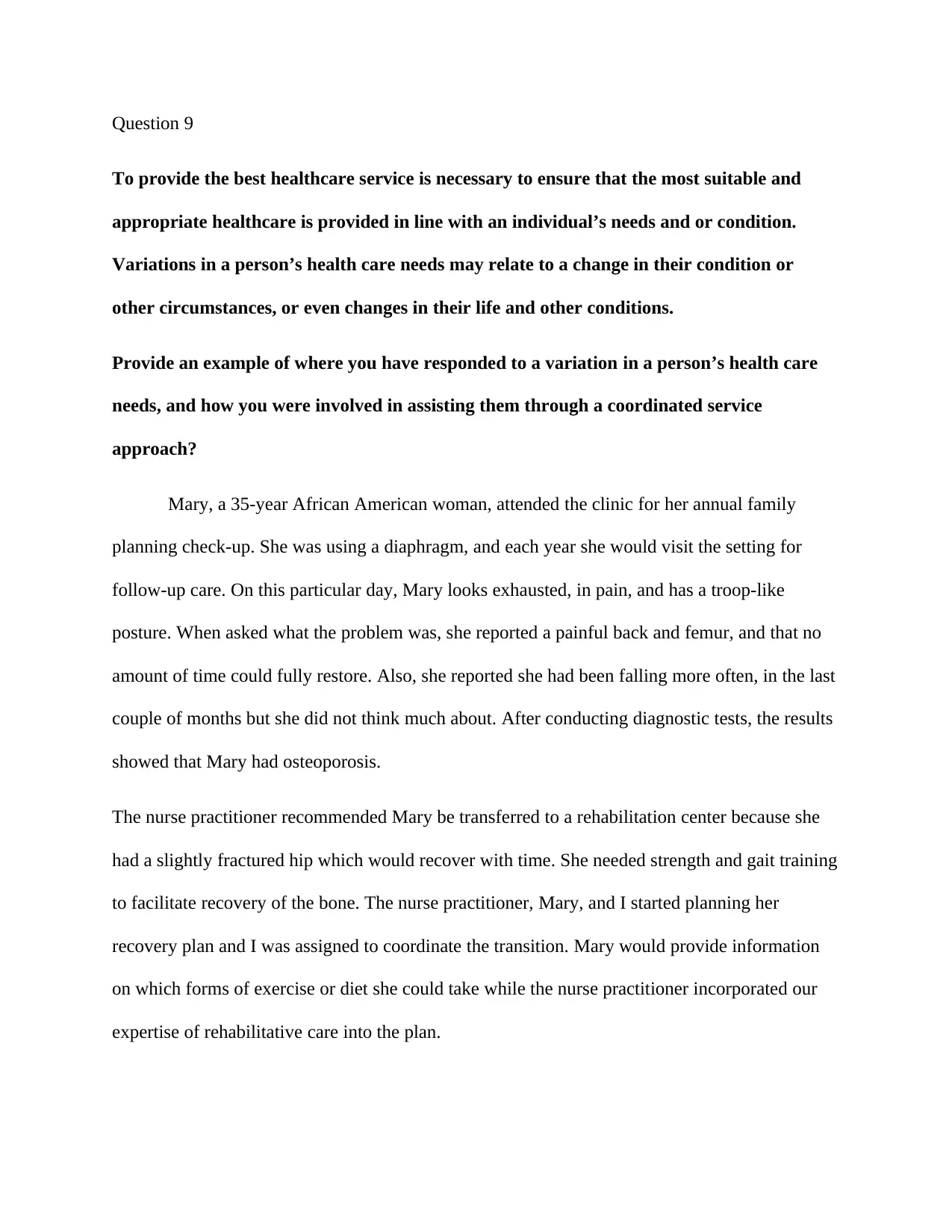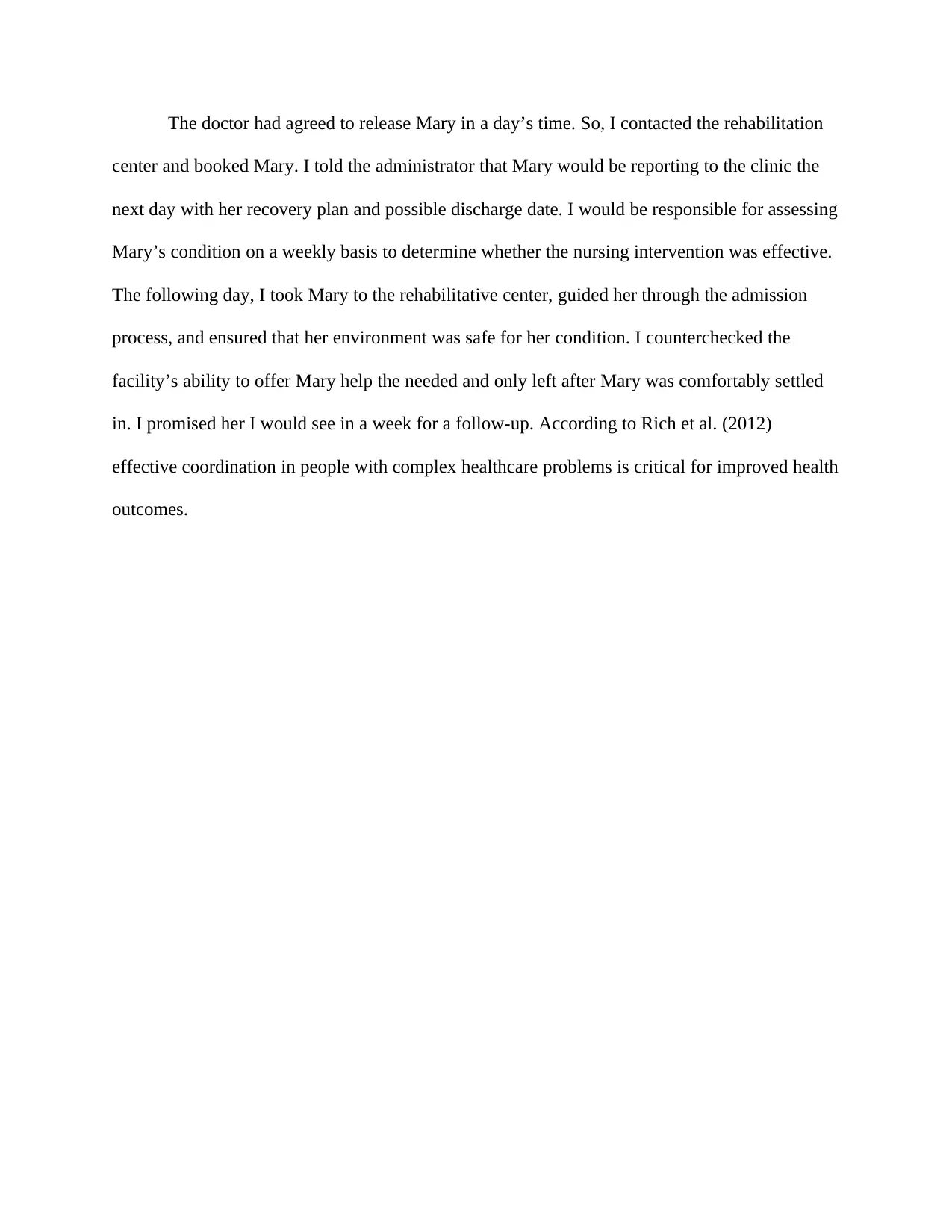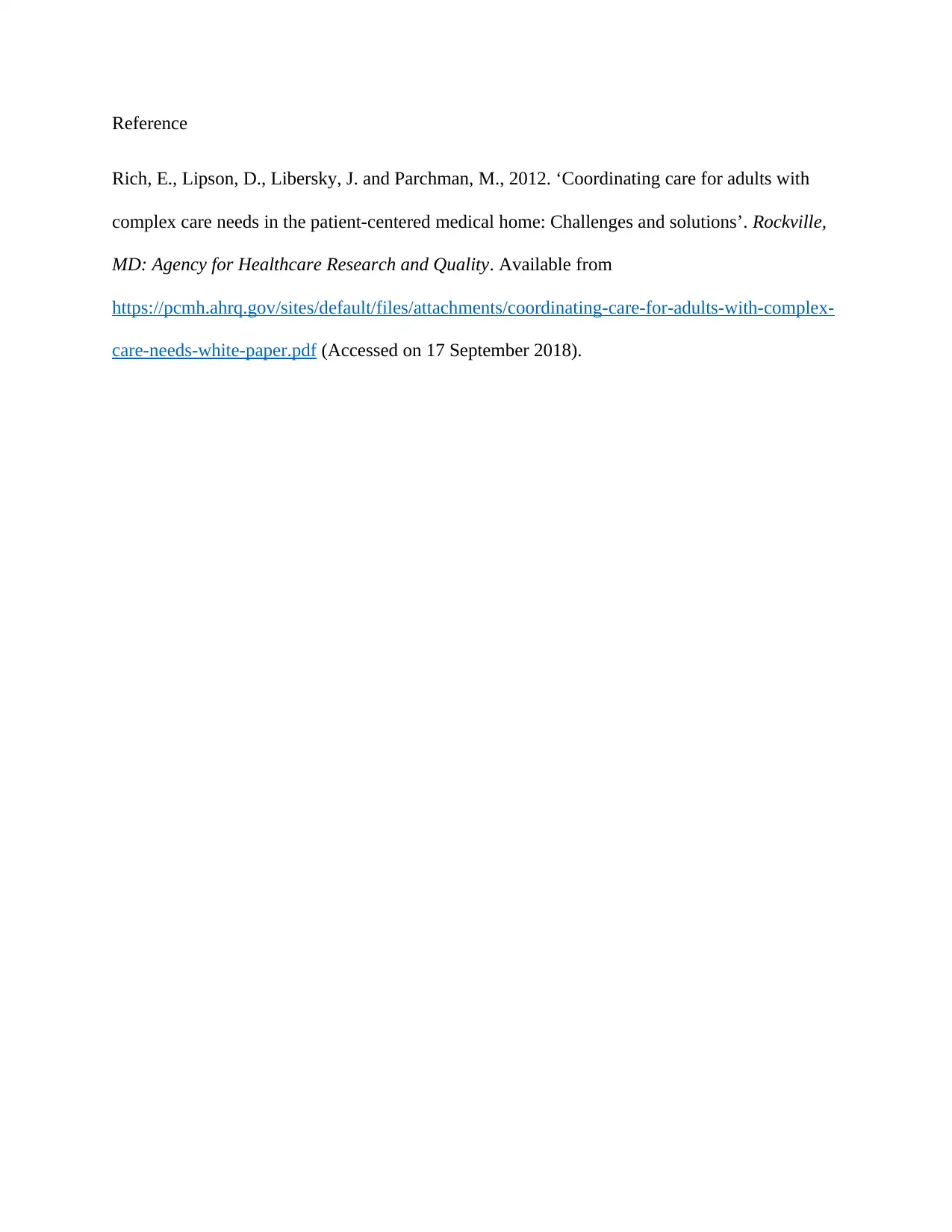Healthcare Coordination: Analysis of a Patient's Case Study Example
VerifiedAdded on 2023/06/07
|3
|527
|193
Report
AI Summary
This report presents a case study focused on healthcare coordination, specifically addressing the care of a 35-year-old African American woman, Mary, who presented with symptoms of osteoporosis during a routine check-up. The report details the steps taken by a nurse practitioner to diagnose Mary's condition and facilitate her transition to a rehabilitation center. The author, who was assigned to coordinate the transition, describes the planning process, which involved Mary, the nurse practitioner, and the rehabilitation center staff. The author booked Mary's admission to the rehabilitation center, ensured a safe environment, and planned for weekly follow-ups to assess the effectiveness of the nursing interventions. The case highlights the importance of coordinated care, referencing Rich et al. (2012) on the impact of effective coordination for patients with complex healthcare needs. The report emphasizes the importance of personalized care and the collaborative efforts required to support patients in their recovery and management of chronic conditions.
1 out of 3










![[object Object]](/_next/static/media/star-bottom.7253800d.svg)